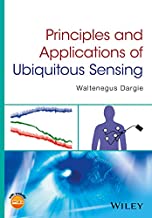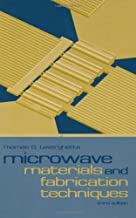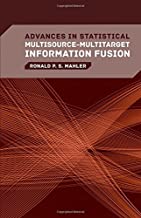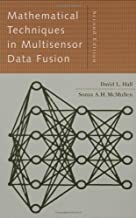Principles & Aplications of Ubiquitous Sensing
Original price was: ₹8,839.40.₹7,071.52Current price is: ₹7,071.52.
ISBN: 9781119091349
Author/Editor: Waltenegus Dargie
Publisher: John Wiley
Year: 2017
1 in stock (can be backordered)
Description
Applications which use wireless sensors are increasing in number. The emergence of wireless sensor networks has also motivated the integration of a large number of small and lightweight nodes which integrate sensors, processors, and wireless transceivers. Existing books on wireless sensor networks mainly focus on protocols and networks and pay little attention to the sensors themselves which the author believes is the main focus. Without adequate knowledge of sensors as well as how they can be designed, realized and used, books on wireless sensor networks become too theoretical and irrelevant. The purpose of this book is to intimately acquaint readers with the technique of sensing (resistive, capacitive, inductive, magnetic, inertial, etc.) and existing sensor technologies. It also discusses how the sensors are used in a wide application domain and how new sensors can be designed and used in a novel way.
Additional information
| Weight | 0.712 kg |
|---|
Product Properties
| Year of Publication | 2017 |
|---|---|
| Table of Contents | Preface xiii About the Companion Website xv List of Abbreviations xvii 1 Introduction 1 1.1 System Overview 2 1.1.1 Sensing System 2 1.1.2 Conditioning System 3 1.1.3 Analogue-to-digital Signal Conversion 3 1.1.4 Processor 4 1.2 Example: AWireless Electrocardiogram 4 1.3 Organisation of the Book 7 2 Applications 9 2.1 Civil Infrastructure Monitoring 9 2.1.1 Bridges and Buildings 10 2.1.2 Water Pipelines 17 2.2 Medical Diagnosis and Monitoring 21 2.2.1 Parkinson s Disease 21 2.2.2 Alzheimer s Disease 25 2.2.3 Sleep Apnea and Medical Journalling 26 2.2.4 Asthma 28 2.2.5 Gastroparesis 31 2.3 Water-quality Monitoring 34 References 39 3 Conditioning Circuits 44 3.1 Voltage and Current Sources 44 3.2 Transfer Function 45 3.3 Impedance Matching 51 3.4 Filters 56 3.5 Amplification 61 3.5.1 Closed-loop Amplifiers 63 3.5.2 Difference Amplifier 65 References 70 4 Electrical Sensing 72 4.1 Resistive Sensing 73 4.2 Capacitive Sensing 78 4.3 Inductive Sensing 84 4.4 Thermoelectric Effect 91 References 94 5 Ultrasonic Sensing 96 5.1 UltrasonicWave Propagation 100 5.2 Wave Equation 106 5.3 Factors Affecting UltrasonicWave Propagation 108 References 111 6 Optical Sensing 114 6.1 Photoelectric Effect 116 6.2 Compton Effect 120 6.3 Pair Production 126 6.4 Raman Scattering 127 6.5 Surface Plasmon Resonance 131 References 133 7 Magnetic Sensing 136 7.1 Superconducting Quantum Interference Devices 136 7.1.1 DC-SQUID 139 7.1.2 RF-SQUID 141 7.2 Anisotropic Magnetoresistive Sensing 142 7.3 Giant Magnetoresistance 148 7.4 Tunnelling Magnetoresistance 151 7.5 Hall-effect Sensing 155 References 157 8 Medical Sensing 160 8.1 Excitable Cells and Biopotentials 161 8.1.1 Resting Potential 162 8.1.2 Channel Current 166 8.1.3 Action Potentials 166 8.1.4 Propagation of Action Potentials 167 8.1.5 Measuring Action Potentials 171 8.2 Cardiac Action Potentials 175 8.2.1 Propagation of Cardiac Action Potentials 177 8.2.2 The Electrocardiogram 180 8.2.2.1 Re-entry 181 8.2.2.2 Loss of Membrane Potential 182 8.2.2.3 Afterdepolarisations 183 8.3 Brain Action Potentials 185 8.3.1 Electroencephalography 188 8.3.2 Volume Conduction 193 8.3.3 Electrode Placement 195 References 198 9 Microelectromechanical Systems 202 9.1 Miniaturisation and Scaling 202 9.1.1 Physical Properties 203 9.1.2 Mechanical Properties 203 9.1.3 Thermal Properties 204 9.1.4 Electrical and Magnetic Properties 205 9.1.5 Fluid Properties 205 9.1.6 Chemical Properties 206 9.1.7 Optical Properties 206 9.2 Technology 206 9.2.1 Growth and Deposition 207 9.2.2 Photolithography 207 9.2.3 Etching 209 9.3 Micromachining 209 9.3.1 Surface Micromachining 210 9.3.2 Bulk Micromachining 211 9.3.2.1 Reactive Ion Etching 212 9.3.2.2 Micromolding 215 9.3.2.3 Non-silicon Micromolding 216 9.3.2.4 Plastic Micromolding 217 9.4 System Integration 218 9.5 Micromechanical Sensors 220 9.5.1 Pressure and Force Sensors 220 9.5.1.1 Piezoelectric Effect 222 9.5.1.2 Piezoresistance 226 9.5.1.3 Fabrication of a Piezoresistive Sensor 227 9.5.2 Flow Sensors 227 9.5.2.1 Floating Plate 228 9.5.2.2 Artificial Hair Cell 231 9.5.3 Accelerometers 234 9.5.3.1 Fabrication of an Accelerometer 235 9.5.4 Gyroscopes 236 9.5.4.1 Fabrication of a Gyroscope 246 References 249 10 Energy Harvesting 253 10.1 Factors Affecting the Choice of an Energy Source 253 10.1.1 Sensing Lifetime 254 10.1.2 Sensor Load 254 10.1.3 Energy Source 255 10.1.4 Storage 256 10.1.5 Regulation 257 10.2 Architecture 263 10.3 Prototypes 265 10.3.1 Microsolar Panel 265 10.3.2 Microgenerator 269 10.3.3 Piezoelectricity 272 References 275 11 Sensor Selection and Integration 278 11.1 Sensor Selection 278 11.1.1 Accuracy 278 11.1.2 Sensitivity 280 11.1.3 Zero-offset 280 11.1.4 Reproducibility 280 11.1.5 Span 281 11.1.6 Stability 281 11.1.7 Resolution 282 11.1.8 Selectivity 282 11.1.9 Response Time 282 11.1.10 Self-heating 282 11.1.11 Hysteresis 283 11.1.12 Ambient Condition 283 11.1.13 Overload Characteristics 283 11.1.14 Operating Life 284 11.1.15 Cost, Size, andWeight 284 11.2 Example: Temperature Sensor Selection 284 11.2.1 Resistance Temperature Detectors 284 11.2.2 Thermistors 285 11.2.3 Thermocouples 286 11.2.4 Infrared 286 11.3 Sensor Integration 287 11.3.1 Dead Volume 287 11.3.2 Self-heating 287 11.3.3 Internal Heat Sources 294 11.3.3.1 External Heat and Radiation Sources 296 References 296 12 Estimation 298 12.1 Sensor Error as a Random Variable 299 12.2 Zero-offset Error 303 12.3 Conversion Error 305 12.4 Accumulation of Error 309 12.4.1 The Central LimitTheorem 313 12.5 Combining Evidence 315 12.5.1 Weighted Sum 316 12.5.2 Maximum-likelihood Estimation 322 12.5.3 Minimum Mean Square Error Estimation 325 12.5.4 Kalman Filter 328 12.5.5 The Kalman Filter Formalism 334 References 335 Index 337 |
| Author | Waltenegus Dargie |
| ISBN/ISSN | 9781119091349 |
| Binding | Hardback |
| Edition | 1 |
| Publisher | John Wiley |
You must be logged in to post a review.






Reviews
There are no reviews yet.